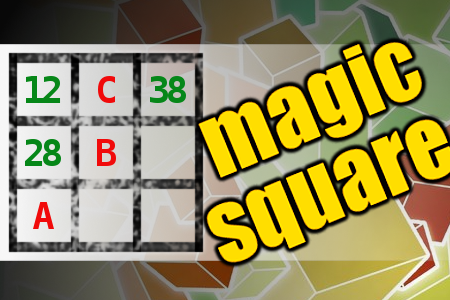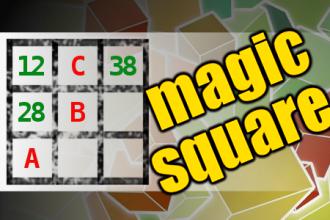MAGIC SQUARE: Calculate A-B+C
The aim is to place the some numbers from the list (4, 9, 12, 18, 19, 22, 28, 29, 32, 38, 80, 91) into the empty squares and squares marked with A, B an C. Sum of each row and column should be equal. All the numbers of the magic square must be different. Find values for A, B, and C. Solution is A-B+C.
Some Things You Just Can't Explain
A farmer is sitting in the neighborhood bar getting soused. A man comes in and asks the farmer, "Hey, why are you sitting here on this beautiful day getting drunk?"
Farmer: Some things you just can't explain.
Man: So what happened that's so horrible?
Farmer: Well, today I was sitting by my cow milking her. Just as I got the bucket about full, she took her left leg and kicked over the bucket.
Man: Ok, but that's not so bad.
Farmer: Some things you just can't explain.
Man: So what happened then?
Farmer: I took her left leg and tied it to the post on the left.
Man: and then?
Farmer: Well, I sat back down and continued to milk her. Just as I got the bucket about full, she took her right leg and kicked over the bucket.
Man: Again?
Farmer: Some things you just can't explain.
Man: So, what did you do then?
Farmer: I took her right leg this time and tied it to the post on the right.
Man: and then?
Farmer: Well, I sat back down and began milking her again. Just as got the bucket about full, the stupid cow knocked over the bucket with her tail.
Man: Hmmm
Farmer: Some things you just can't explain.
Man: So, what did you do?
Farmer: Well, I didn't have any more rope, so I took off my belt and tied her tail to the rafter. In that moment, my pants fell down and my wife walked in...

